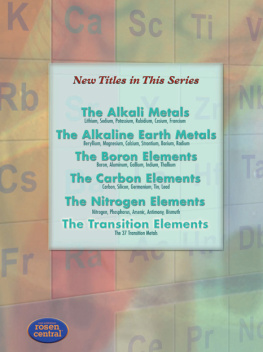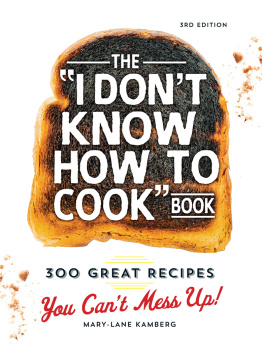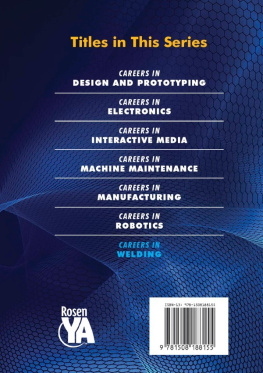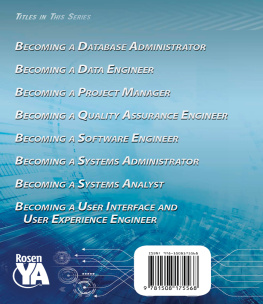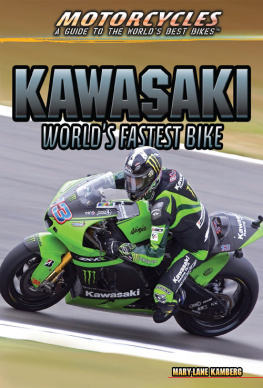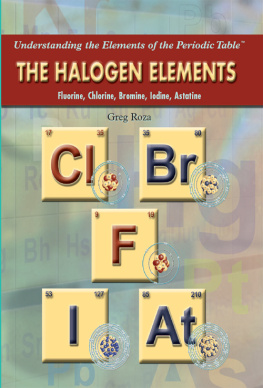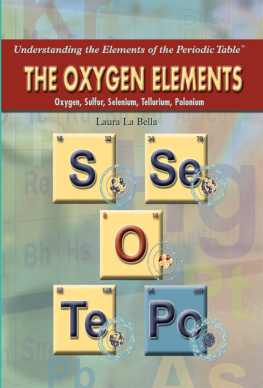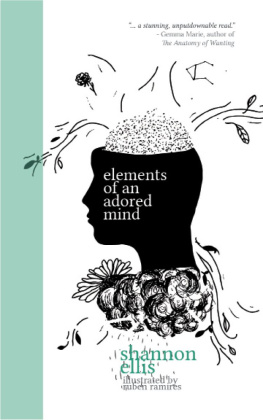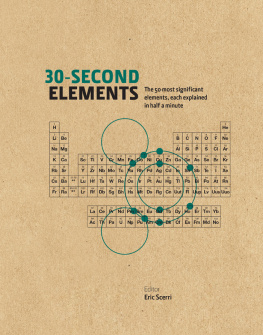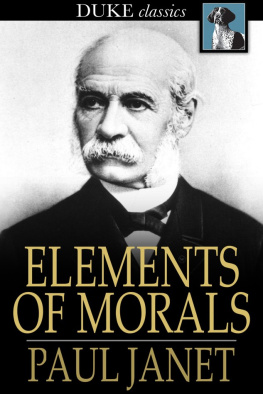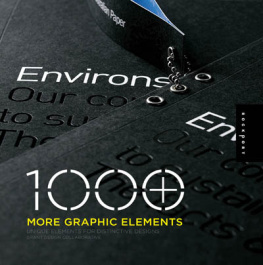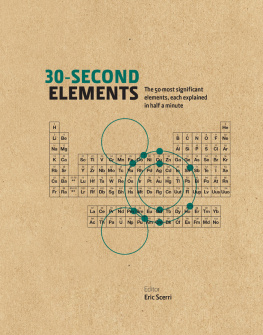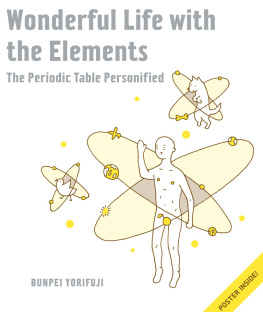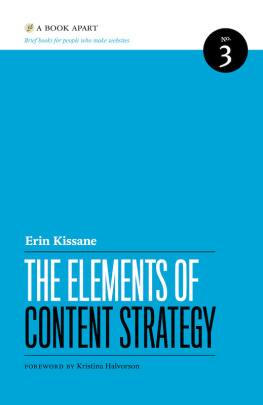Mary-Lane Kamberg - The Transition Elements
Here you can read online Mary-Lane Kamberg - The Transition Elements full text of the book (entire story) in english for free. Download pdf and epub, get meaning, cover and reviews about this ebook. year: 2009, publisher: The Rosen Publishing Group, Inc, genre: Romance novel. Description of the work, (preface) as well as reviews are available. Best literature library LitArk.com created for fans of good reading and offers a wide selection of genres:
Romance novel
Science fiction
Adventure
Detective
Science
History
Home and family
Prose
Art
Politics
Computer
Non-fiction
Religion
Business
Children
Humor
Choose a favorite category and find really read worthwhile books. Enjoy immersion in the world of imagination, feel the emotions of the characters or learn something new for yourself, make an fascinating discovery.
- Book:The Transition Elements
- Author:
- Publisher:The Rosen Publishing Group, Inc
- Genre:
- Year:2009
- Rating:5 / 5
- Favourites:Add to favourites
- Your mark:
- 100
- 1
- 2
- 3
- 4
- 5
The Transition Elements: summary, description and annotation
We offer to read an annotation, description, summary or preface (depends on what the author of the book "The Transition Elements" wrote himself). If you haven't found the necessary information about the book — write in the comments, we will try to find it.
The 37 transitional elements include a huge number of elements that humans use, even require, on a daily basis. The Transitional Elements explores the discovery, uses, classification, and compounds, and the impact of these elements on the individual reader.
The Transition Elements — read online for free the complete book (whole text) full work
Below is the text of the book, divided by pages. System saving the place of the last page read, allows you to conveniently read the book "The Transition Elements" online for free, without having to search again every time where you left off. Put a bookmark, and you can go to the page where you finished reading at any time.
Font size:
Interval:
Bookmark:


Dedicated to the teachers in my family: Franck Brichet, Cindy Clenard, Eric Falls, Ruth Ann Falls, Ricki Gilbert, Melinda Oakes, Susan Shanaman, and Brynn White And in memory of Lena Kamberg and Bobbie Griffith Powell
Published in 2010 by The Rosen Publishing Group, Inc.
29 East 21st Street, New York, NY 10010
Copyright 2010 by The Rosen Publishing Group, Inc.
First Edition
All rights reserved. No part of this book may be reproduced in any form without permission in writing from the publisher, except by a reviewer.
Library of Congress Cataloging-in-Publication Data
Kamberg, Mary-Lane, 1948
The transition elements: the 37 transition metals / Mary-Lane Kamberg.1st ed.
p. cm.(Understanding the elements of the periodic table)
Includes bibliographical references and index.
ISBN-13: 978-1-4358-5332-4 (library binding)
1. Transition metalsPopular works. 2. Periodic lawPopular works. I. Title.
QD172.T6K36 2010
546.6dc22
2009001052
Manufactured in the United States of America
On the cover: The thirty-seven transition elements of the periodic table are metals that share certain characteristics.
Contents
H ave you ever gazed into the night sky and wondered what the universe is made of? Not long ago, legend said the moon was made of green cheese.
Today, however, scientists know the universe is made of energy and matter. Energy is the ability to do work. Energy may create heat, electricity, and light. Matter is stuff that has mass and takes up space. Matter can be a solid, liquid, or gas. This stuff is made of atoms.
An element is a substance thats made up of only one kind of atom. Only ninety-four elements are found in nature on Earth. But at least 115 elements are known, and more are predicted. The extra ones have been produced by scientists in experiments. Together, the natural elements and the ones produced in laboratories make up the matter of the universe.
Most elements are metals. The rest of the elements are either nonmetals or metalloids. Chemists arrange the elements in a chart called the periodic table. The rows of the periodic table are called periods. Elements in the same horizontal row have little in common.
However, the elements also line up vertically. The vertical columns are called groups (or families). Elements lined up in the same group have similar chemical and physical characteristics. Their atomic structures (see ) determine these characteristics. If you know which group an element belongs to, you can make an educated guess about what the element is likeeven if you have never heard of it or seen it.
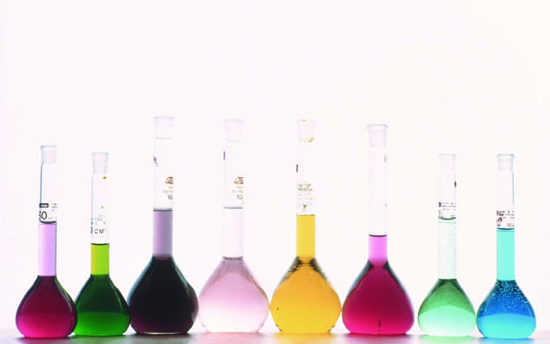
Transition elements often form colorful compounds. From left, the flasks above contain compounds of titanium, vanadium, chromium, manganese, iron, cobalt, nickel, and copper.
Elements in the first vertical column or groupexcept hydrogen, which is a nonmetalare called alkali metals. Group 2 elements are called alkaline earth metals.
Groups 1316 contain a combination of nonmetals, metalloids, and other metals.
Group 17 represents the halogens. Group 18 elements are called noble gases. They seldom combine with other elements.
The two horizontal rows at the bottom of the table are known as inner transition metals. They include the lanthanide series and the actinide series. Together, the lanthanides and actinides are known as rare earth metals. They were once thought to be rare on Earth. Actually, they were only difficult to separate into pure form. Even though separating them is easier today, the name is still used. The metals in these two rows share so many characteristics that theyre hard to tell apart. Except the actinides have an extra characteristic: they are radioactive. Theyre used in nuclear fuel, smoke detectors, and atom bombs.
That leaves groups 312. They are transition elements, also called transition metals. These metals have their own rules. You cant even count on some of them to act the same way every time they combine with other elements. And, from one element to the next, they arent much different. They all share similar properties and behave in similar ways.
Most of the metals you encounter every day are transition metals. Lets learn more about them.
H ave you ever looked in a mirror? Used a spoon to eat raisin nut bran? Or dropped coins into a vending machine? If so, you have used transition metals.
Mirrors may be coated with silver (Ag) or rhodium (Rh). Stainless-steel silverware is made of iron (Fe) and chromium (Cr). Raisin nut bran contains manganese (Mn), iron, copper (Cu), and zinc (Zn). Coins are made of gold (Au), silver, nickel (Ni), copper, and zinc.
Transition metals are shiny and strong. They conduct heat and electricity. You can pound them into thin sheets or draw them out into wire.
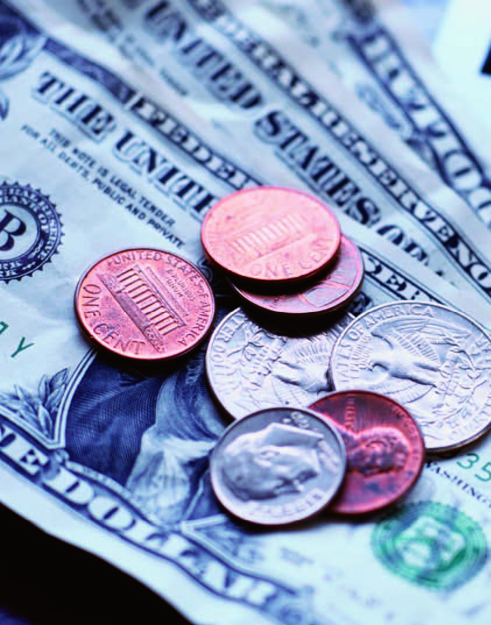
Many countries, including the United States and Canada, use transition elements like gold, silver, nickel, copper, and zinc to make coins.
Some are common. Youve certainly heard of silver, gold, and copper. But do you know about darmstadtium (Ds), roentgenium (Rg), or osmium (Os)? Some transition metals are among the earliest elements known. More than ten thousand years ago, people knew about copper. They used it for tools, weapons, and jewelry. Gold ornaments dating from 6000 to 4000 BCE have also been found.
From the Stone Age to the Iron Age
The first human cultures used stone for tools and weapons. This period is known as the Stone Age. At the end of the Stone Age, humans began using the transition element copper for these purposes.
Around 3000 BCE, metallurgists learned that heating metals makes them easy to mix together. They combined copper and tin (Sn) to make bronze. Bronze made stronger tools and weapons than copper alone. Soon bronze swords, knives, hammers, and arrowheads appeared. The time between 3000 BCE and 1200 BCE is known as the Bronze Age.
By the end of the second millennium BCE, people developed techniques to purify iron from its ore. About 1200 BCE, the Iron Age began. Pure iron is a strong but soft element. Metallurgists experimented with combinations of iron and different amounts of carbon (C) to strengthen the material. Adding carbon to iron makes steel, which is much stronger than iron. Steel made tools and weapons that were stronger than those made from bronze.
Early Transition Metals
The first known transition metals include gold, silver, and copper. These three elements occur in pure form in nature, so they were easy to find and use. (Most of the other transition metals exist only combined with other elements or substances. They have to be separated before they can be used.) Ancient people also discovered iron and mercury (Hg).
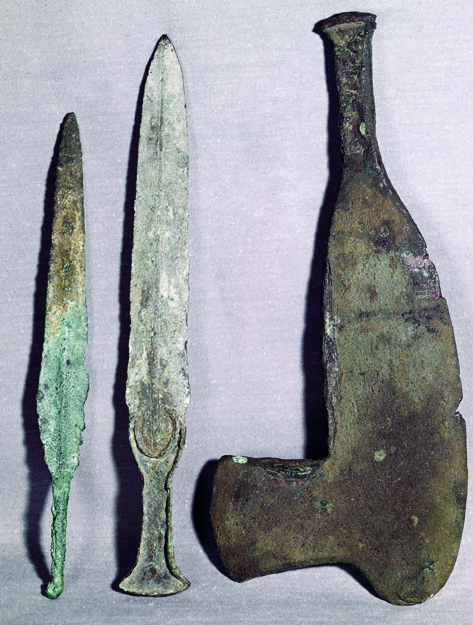
Ancient Egyptians replaced weapons and tools made of copper with ones made of bronze. Adding tin made stronger objects than those made of copper alone. This innovation brought on the Bronze Age in Egypt during the second millennium BCE.
Font size:
Interval:
Bookmark:
Similar books «The Transition Elements»
Look at similar books to The Transition Elements. We have selected literature similar in name and meaning in the hope of providing readers with more options to find new, interesting, not yet read works.
Discussion, reviews of the book The Transition Elements and just readers' own opinions. Leave your comments, write what you think about the work, its meaning or the main characters. Specify what exactly you liked and what you didn't like, and why you think so.

